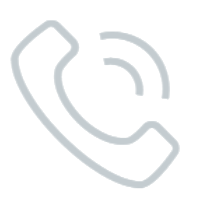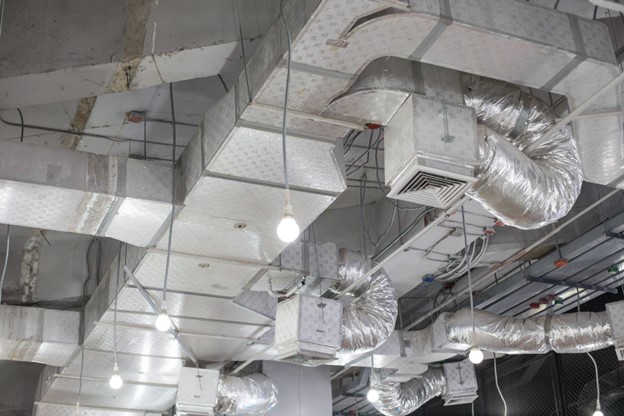A simple forced air heating system is one of the most common heating solutions in commercial and industrial buildings. Understanding how these systems work and recognizing potential issues can help building managers, HVAC professionals, and architects optimize their heating operations and maintenance. In this guide, we’ll explore the basics of how forced air systems operate, their components, and common problems that might require heating repair.
How a Forced Air Heating System Works
A forced air heating system uses air as the heat transfer medium. The core components include a furnace, blower, ductwork, and various vents or registers that distribute warm air throughout a building. The process begins with the thermostat signaling the furnace to ignite. The furnace burns fuel—commonly natural gas, oil, or electricity—to produce heat.
Once the furnace heats the air, a blower motor circulates this warm air through a network of ducts that lead to various rooms or zones. Vents then release the heated air into the space, while return ducts pull cooler air back into the furnace to be reheated.
This cycle continues until the thermostat reaches the desired temperature. These systems are a top choice of industrial heating installers and commercial heating solutions providers for their reliability and ability to heat large spaces efficiently.
Key Components of a Forced Air System
To gain a clearer understanding, it helps to break down the main components of a simple forced air system:
- Furnace: The furnace is the heart of the system, responsible for generating heat. It can be powered by various fuels, including gas, oil, or electricity.
- Blower Motor: The blower motor pushes heated air through the ductwork and into the different areas of the building.
- Ductwork: The ducts serve as the highway for warm air to travel from the furnace to different rooms or zones.
- Thermostat: This acts as the control panel, allowing users to set and adjust the desired temperature.
- Filters: These keep the air clean by trapping dust, debris, and allergens, ensuring better indoor air quality.
Common Issues with Forced Air Systems
Despite their effectiveness, forced air heating systems can face a variety of issues. Here are some of the most common problems and how to address them:
1. Poor Airflow or Uneven Heating: One common complaint is inconsistent heating or weak airflow in certain areas. This can often result from blocked or leaking ducts, dirty filters, or malfunctioning blower motors. Regularly checking for obstructions and scheduling routine duct cleaning can mitigate this problem.
2. Short Cycling: This occurs when the furnace turns on and off frequently without reaching the desired temperature. Potential causes include an improperly set thermostat, a clogged filter, or an overheating furnace. Adjusting the thermostat and replacing the filter usually resolves the issue, but if the furnace overheats, you should call for professional attention right away.
3. Noisy Operation: Unusual noises like banging, rattling, or squealing can be alarming. These sounds often indicate loose or damaged components within the system, such as a faulty blower motor or worn-out belts. Early diagnosis and repair can prevent these problems from escalating.
4. Frequent Furnace Cycling: A furnace that cycles on and off too often can lead to excessive wear and tear. This problem might be due to a dirty air filter, a malfunctioning thermostat, or an incorrectly sized furnace for the building. Simple solutions like cleaning or replacing the filter or recalibrating the thermostat can often fix the issue.
5. Blower Runs Continuously: If the blower fan keeps running even when the heating cycle has ended, it may be a sign of a malfunctioning fan limit switch. This is a component that needs professional assessment and possibly replacement.
Each of these issues can lead to higher energy bills, reduced comfort, and more significant repair costs if they aren’t addressed as soon as possible. For any of these problems, make a point to consult an experienced industrial heating installer or commercial HVAC specialist to maintain an efficient system.
Heating Repair Solutions and Maintenance Tips
Routine maintenance is crucial for avoiding unexpected breakdowns and keeping your forced air heating system running efficiently. Here are some practical tips for HVAC professionals and building managers:
- Regular Filter Replacement: Changing the filter every 1 to 3 months helps maintain good airflow and reduces strain on the system.
- Annual Professional Inspections: Scheduling a yearly inspection with a professional heating repair service can catch potential problems early and keep the system in top condition.
- Ductwork Inspection and Cleaning: Periodically inspecting the ductwork for leaks or blockages can improve efficiency and air quality.
- Thermostat Calibration: Ensuring that the thermostat is accurately calibrated will prevent unnecessary heating cycles and save energy.
By following these maintenance tips, you can prolong the lifespan of your forced air heating system and keep it operating efficiently.
Choosing the Right Commercial Heating Solutions
When it comes to choosing or upgrading your heating system, consulting with knowledgeable industrial heating installers is crucial. They can provide valuable insights into the best commercial heating solutions tailored to the specific needs of a building.
Whether you’re working with an older system that needs upgrading or a new installation, it is important to collaborate with experienced professionals who can guide you in selecting the right system, optimizing its performance, and ensuring compliance with building codes and regulations.
Need an expert to help repair your forced air heating system? TRI-AIR SYSTEMS is here to help or provide advice based on your problem.
Contact us today: https://www.triair.ca/contact-us/.





